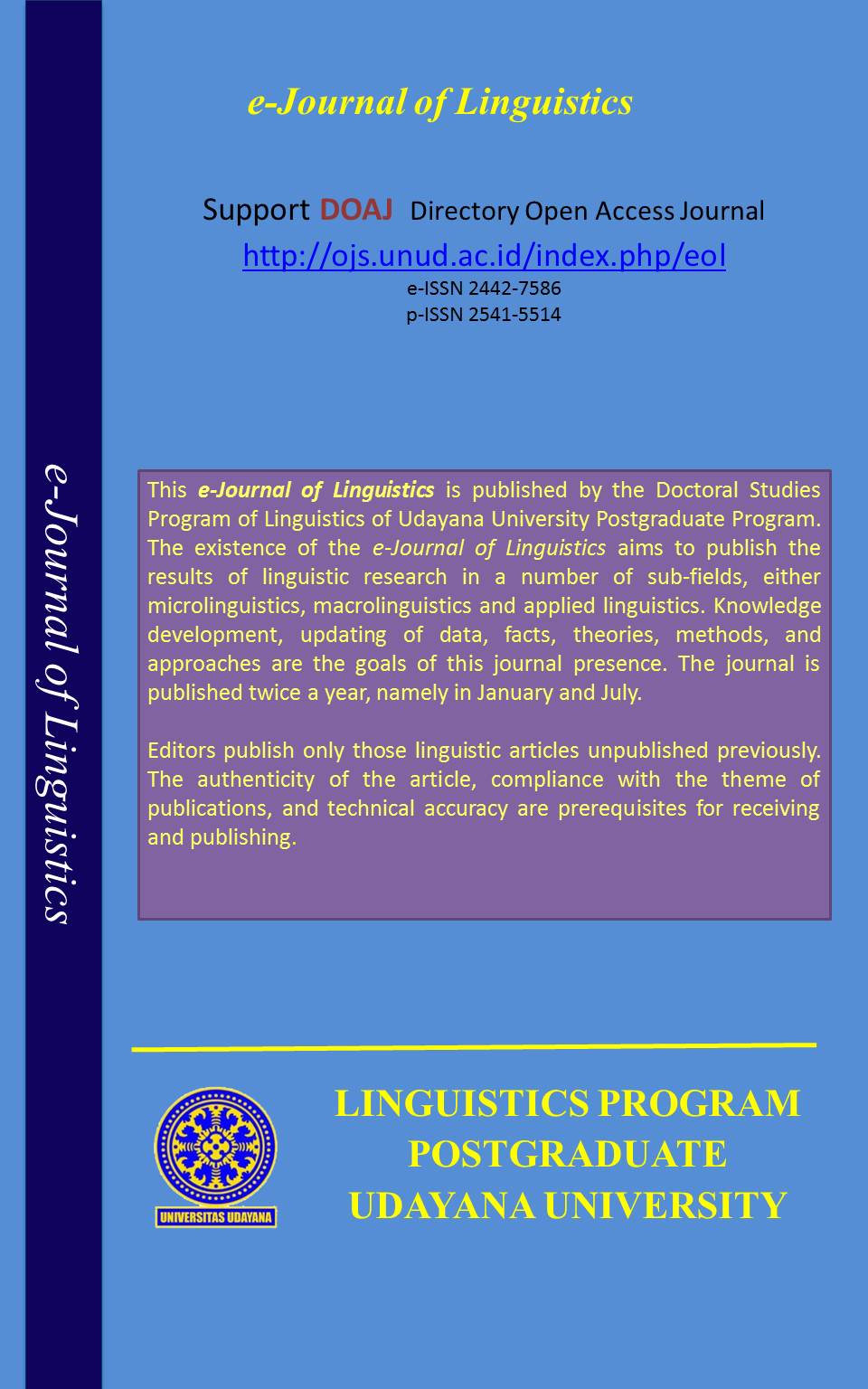10.24843 Indonesian Derivative Verb Affixes: a Study of Typological Linguistics
Abstract
Based on the typology of the morphological point of view, Indonesian is an agglutinative language. Affixation plays an important role in its morphological processes, meaning that prefixes, suffixes and affixes are added to the word stems to form new words. From the syntactical point of view, its basic word order adheres to SVO. The predicate, which is in the form of verb, has the ability to bind arguments to create a clausal structure. Therefore, it is possible that one verb binds one argument, two arguments and three arguments, highly depending on the type of the verb. As a case study of typological linguistics, this present study is an initial one which explores the Indonesian derivative verbs. The theory of typological linguistics is used to analyze the system through which how the Indonesian derivative verbs are morphologically formed is analyzed. In this case, the verb functioning as the predicate, can bind arguments in order to create a clausal structure.
The result of the analysis shows that, from the perspective of the typological linguistics, the Indonesian derivative verbs can be derived from the stems under the categories of 1) noun, 2) adjective, 3) precategory, and 4) verb. It also shows that there are six types of derivational affixes which can be used to form derivative verbs from the four stems mentioned above; they are (1) ber-, (2) ber-an, (3) ter-, (4) meng-, (5) –kan, and (6) –i. The ones which can be attached to nouns to form derivative verbs are ber-, ter-, meng-, -kan , and –i ; the ones which can be attached to adjectives to form derivative verbs are ber-, ter-, meng-, -kan and –i; the ones which can be attached to precategory to form derivative verbs are ber-, ber-an, ter-, meng-, -kan, and –i; and the ones which can be attached to verbs are –kan and –i. The derivational affixes ber-, ter-, and meng- are used to form intransitive derivative verbs, and the derivational affixes meng-, -kan, and –i are used to form transitive derivative verbs.
Downloads
References
Comrie, B. 1989. Lynguistic Typology. Dalam Newmeyer (ED) Linguistics: The Cambridge Survey Vol. 1. Cambridge: Cambridge University Press.
Dixon, R.M.W. 2010. Basic Linguistic Theory Vol.2. Oxford: Oxford University Press.
Haspelmath, Martin and Andrea D.Sim. 2010. Understanding Morphology : Understanding Language Series. London: An HachetteHoder Education An Hachette UK Company.
Katamba, Francis. 2006. Modern Linguistics Morphology. London: MacMillan Press LTD.
Mahsun. 2005. Metode Penelitian Bahasa tahapan Strategi Metode dan Tekniknya. Jakarta: Raja Grafindo. Jakarta: Universitas Indonesia.
Mirsa, Umiyati. 2014. Tipologi perilaku gramatikal adjektiva Bahasa Indonesia (Disertasi). Denpasar : Program Pasca Sarjana. Universitas Udayana.
Song, Jae Jung. 2001. Linguistic Typology: Morphology and Syntax. London: Longman.
Wangke, Humphrey. 2014. Peluang Masyarakat Ekonomi ASEAN (MEA) 2015. https://www.google.com/search?q=Wangke%2C+Humphrey.+Masyarakat+Ekonomi +ASEAN.
Zainuddin. 2016. A Study on Derivational Affixes of Indonesian Noun-Formation in Newspaper Editorial: A Semantic Perspective pada International Journal of English Linguistics: Vol.6, No.3; 2016, ISSN 1923-869X E-ISSN 1923-8703. Canadian Center of Science and Education.

This work is licensed under a Creative Commons Attribution 4.0 International License











